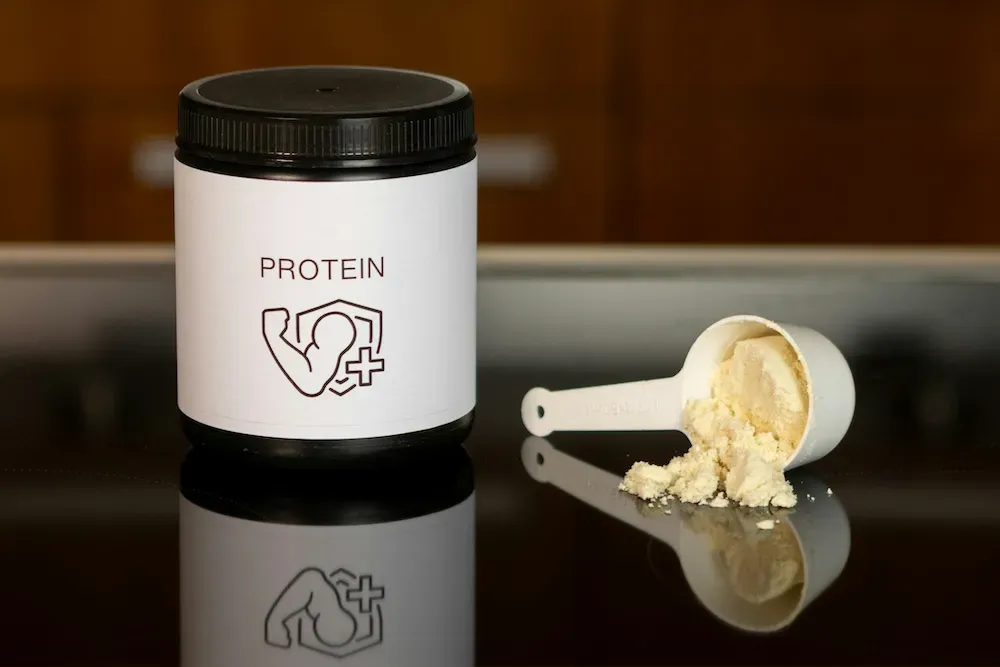The Thermic Effect of Food: How Your Diet Impacts Your Metabolism and Burns Calories

Understanding the Thermic Effect of Food
The thermic effect of food (TEF), also known as diet-induced thermogenesis (DIT), is the increase in metabolic rate that occurs after eating. This phenomenon, also referred to as the thermic effect of feeding, represents the energy required by the body to digest, absorb, and store the nutrients from the foods you consume. TEF typically accounts for about 10% of your total daily energy expenditure, although this can vary depending on several factors.
TEF is a crucial component of your total daily energy expenditure, alongside your basal metabolic rate (BMR) and the energy burned through physical activity. Understanding and optimizing TEF can support weight management and overall health, as the energy required for TEF can be influenced by the macronutrient composition of your diet. For instance, protein has a higher thermic effect compared to carbohydrates and fats, meaning it requires more energy to digest and metabolize.
Macronutrient composition
Macronutrient composition plays a significant role in determining the thermic effect of food. The three primary macronutrients—proteins, carbohydrates, and fats—provide varying amounts of calories per gram and have different effects on TEF:
• Protein: With the highest thermic effect, approximately 20-30% of the calories from protein are used during digestion and metabolism. This makes high-protein meals particularly effective in boosting metabolic rate and supporting weight management.

• Carbohydrates: Carbs have a moderate thermic effect, with about 5-10% of their calories expended during digestion. Complex carbohydrates, like whole grains, require more energy to break down than simple sugars.
• Fats: Fats have the lowest thermic effect, with only about 0-3% of their calories used during digestion. While fats are essential for health, they are more calorie-dense and easier for the body to store, contributing less to TEF.
Studies involving Bray GA highlight the impact of dietary protein on metabolism, specifically noting the absence of metabolic adaptation related to TEF in their findings.
How the Thermic Effect of Food Works
TEF is a natural process that temporarily increases your metabolic rate after eating, helping you burn more calories. This increase occurs because your body needs energy to digest, absorb, and transport nutrients from the food you consume. The energy required for these processes can be expressed as a percentage of the energy provided by each macronutrient.
By understanding how different macronutrients affect TEF, you can make informed dietary choices to maximize your energy expenditure and support your health and weight management goals.
Factors That Influence the Thermic Effect of Food
Several factors can influence the thermic effect of food:
• Macronutrient Composition: Protein-rich meals have the highest thermic effect, significantly boosting metabolism. Carbohydrates and fats, while essential, have a lower thermic effect.
• Meal Frequency: Contrary to popular belief, meal frequency has little to no impact on TEF when total daily calorie intake is the same. Whether you eat three large meals or six smaller ones, the thermic effect remains consistent if the total caloric intake is equivalent.
• Physical Activity: Exercise can slightly increase TEF, but the effect is marginal. However, combining physical activity with a high-protein diet can synergistically boost metabolism.
• Age and Body Composition: As we age, our metabolic rate generally slows, leading to a lower TEF. Additionally, individuals with more lean muscle mass tend to have a higher TEF because muscle tissue is more metabolically active than fat tissue.
• Nutrition: Choosing nutritious foods can significantly influence TEF and overall energy expenditure. A well-rounded diet not only supports weight loss but also aids in maintaining a healthy lifestyle by optimizing caloric balance and metabolic rate.
Measuring the Thermic Effect of Food
The thermic effect of food can be measured using various scientific methods, each requiring specialized equipment and expertise:
• Indirect Calorimetry: This method assesses the amount of oxygen consumed and carbon dioxide produced by the body after eating, providing a calculation of the energy expended during digestion and metabolism.
• Doubly Labeled Water: This technique involves tracking the elimination of isotopes in water consumed by the individual, allowing scientists to calculate total energy expenditure, including TEF.
• Whole-Room Calorimetry: This method measures all heat production and energy expenditure in a controlled environment, providing a detailed assessment of TEF.
While these methods are accurate, they are complex and typically conducted in research settings. At home, TEF can be estimated based on the macronutrient composition of meals, giving you a rough idea of your energy expenditure.
How Many Calories Are Burned Through the Thermic Effect of Food?
TEF generally accounts for about 10% of your total daily energy expenditure, though this varies based on diet composition and individual characteristics. Protein-rich meals can significantly increase the calories burned through TEF, making them an effective component of a weight management strategy.

Using the Thermic Effect of Food to Lose Weight
Incorporating foods with a high thermic effect, such as protein-rich foods, into your diet can help increase your metabolic rate and burn more calories. A study from the Functional Food Centre at Oxford Brookes University found that adding chilli peppers to meals can significantly increase diet-induced thermogenesis (DIT) by over 50%. This suggests that incorporating chilli peppers into diets may aid in weight loss and help prevent weight gain. When combined with regular physical activity, this approach can create a calorie deficit, essential for weight loss.
Debunking Common Myths About the Thermic Effect of Food
Negative-calorie foods do not exist; while some foods may have a low calorie count and a relatively high thermic effect, the energy required to digest them is not enough to result in a net negative calorie balance. Additionally, the impact of certain spices and foods on TEF, such as chili peppers, is minor and short-lived, making them ineffective as a primary weight loss strategy.
Diet-Induced Thermogenesis (DIT)
DIT, also known as the thermic effect of food, contributes to the total calories you burn each day. While it is only a small portion of your total daily energy expenditure, understanding and optimizing DIT can support your overall health and weight management goals. By focusing on high-protein foods and maintaining an active lifestyle, you can enhance DIT and promote a more balanced approach to weight management.
FAQ: Which food has the highest thermic effect?
Protein-rich foods have the highest thermic effect. Among these, lean meats such as chicken breast and turkey have a particularly high thermic effect, as they require more energy to digest and metabolize compared to other foods. Approximately 20-30% of the calories consumed from protein are used for digestion and metabolism, making protein the macronutrient with the highest thermic effect.


FAQ: What percentage of protein is thermic effect?
The thermic effect of protein is approximately 20-30% of the calories consumed. This means that when you consume 100 calories of protein, your body will use about 20-30 of those calories just to digest and process the protein.
FAQ: How long does thermic effect last?
The thermic effect of food (TEF) typically begins shortly after eating and can last for several hours. The exact duration can vary depending on the size and composition of the meal, but TEF generally peaks within 1-3 hours after eating. The metabolic boost from TEF gradually tapers off after this peak.
FAQ: How is TEF calculated?
TEF is calculated by measuring the increase in metabolic rate after consuming food, which is usually expressed as a percentage of the calories consumed. This can be done through methods like indirect calorimetry, where oxygen consumption and carbon dioxide production are measured after a meal to determine the energy expended on digestion, absorption, and metabolism.
FAQ: What is the Dorito theory? What is the Dorito effect?
The “Dorito effect” refers to the idea that modern processed foods are engineered to be hyper-palatable through the use of artificial flavors, which can make them more appealing and lead to overeating. The term comes from the observation that foods like Doritos have been designed to deliver a powerful sensory experience that keeps people eating more. This concept highlights the impact of food engineering on eating behaviors and obesity.








